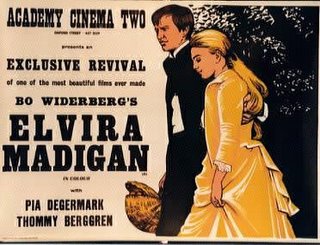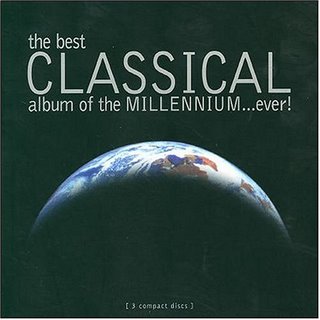Introduction to classical music #7: basic repertory.
In my opinion, the basic repertory of classical music is a paramount concept, because it is often via the basic repertory that first contacts and first impressions with classical music are made; however, the basic repertory is a two sided medal, and this, for two reasons.
1 - Model pieces.
 At large, the basic repertory in classical music consists of compositions which left a mark in their time, which became masterpieces over time, or which became popular for a particular reason (click here!). For example, Beethoven's 5th Symphony became famous because of its complexity and especially because of its famous first four notes; Strauss' waltzes were, at their time, extremely popular pieces amongst higher classes and the general public (Strauss was one of the first to give a title to each of its compositions, so that the public would recognize them easily); as for the famous the 2nd movement of the Piano Concerto #21 by Mozart, also subtitled Elvira Madigan, it became very popular only towards the end of 1960's, because of its use in the film… Elvira Madigan. Before the film, the Piano Concerto #21 by Mozart was rarely recorded or played in concerts.
At large, the basic repertory in classical music consists of compositions which left a mark in their time, which became masterpieces over time, or which became popular for a particular reason (click here!). For example, Beethoven's 5th Symphony became famous because of its complexity and especially because of its famous first four notes; Strauss' waltzes were, at their time, extremely popular pieces amongst higher classes and the general public (Strauss was one of the first to give a title to each of its compositions, so that the public would recognize them easily); as for the famous the 2nd movement of the Piano Concerto #21 by Mozart, also subtitled Elvira Madigan, it became very popular only towards the end of 1960's, because of its use in the film… Elvira Madigan. Before the film, the Piano Concerto #21 by Mozart was rarely recorded or played in concerts. If you know only 5 or 6 titles or composer names of classical music, than the basic repertory is a good starting point for you. There are a lot of CD compilations which gather some well known pieces from the basic repertory (see the opposite image); you can also find this kind of compilation on the Net, with iTunes (click here).
If you know only 5 or 6 titles or composer names of classical music, than the basic repertory is a good starting point for you. There are a lot of CD compilations which gather some well known pieces from the basic repertory (see the opposite image); you can also find this kind of compilation on the Net, with iTunes (click here).In fact, the basic repertory in classical music plays a capital role, in my opinion, which is to shape our tastes. It is usually by going through the basic repertory that one discovers what one likes and, especially, what one does not like in classical music. It is also with the basic repertory that one discovers his preferred instrument -the majority of classical music lovers have their own preferred instrument, like most of the jazz music lovers. Personally, I love baroque trumpet and also choral pieces.
2 - Dead pieces.
One disadvantage of the basic repertory in classical music is that a great number of those pieces are repeated so often in TV commercials or in films, that it creates what I call dead pieces; what I mean here is that a piece such as Pachelbel's Canon is recycled so many times that it becomes dry. And the worst part in all this, it is that the vast majority of people never heard this piece played on period instruments…
Therefore, good for you if you find a CD compilation that you like, but if half of the pieces on it are dead pieces, you will quickly lose interest, since you will get the impression that you already know those pieces by heart. Moreover, the fact of always hearing the same classical pieces over and over through most of the mass medias ends up giving the impression that classical music is always the same thing, which is naturally not true. I would even go further by saying that not a day goes by without us hearing some classical music somewhere.
The classical and the symphonic.
 One thing is certain, however, it is that the movies have trained us the listen to classical music, because the majority of film scores are, to some extent, symphonic poems (when film composers do not literally copy some classical music). We are in fact ready to plunge into symphonic music, which was not always the case. Contrary to the reality of the past 2 or 3 centuries, classical music was accessible only to high-society. I think that classical music has never been as accessible as it is today; it is only up to you to take the first steps!
One thing is certain, however, it is that the movies have trained us the listen to classical music, because the majority of film scores are, to some extent, symphonic poems (when film composers do not literally copy some classical music). We are in fact ready to plunge into symphonic music, which was not always the case. Contrary to the reality of the past 2 or 3 centuries, classical music was accessible only to high-society. I think that classical music has never been as accessible as it is today; it is only up to you to take the first steps!Next time, I will talk to you about ways in which classical music speaks to us.
See you!


0 Comments:
Post a Comment
<< Home